TRANSIT MEDIA
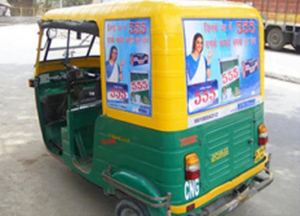
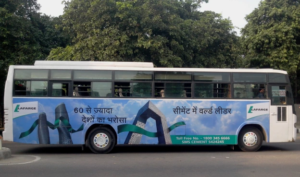



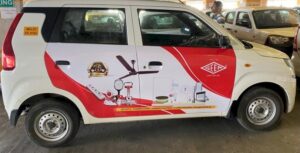
What is Transit Media
Transit Media Advertising refers to promotional content displayed in or on public transportation vehicles and areas, targeting a wide and diverse audience. It is an effective medium for reaching commuters in urban areas with high footfall and traffic.
What is Transit Media Advertising?
Transit media advertising involves placing advertisements in areas associated with public transportation. These areas include buses, trains, taxis, subway stations, bus shelters, and airport terminals. The primary goal is to capture the attention of commuters during their daily travel, providing repeated exposure to brand messages.
Transit media agencies focus on advertising placements within public transportation systems like buses, trains, and subway stations. The cost for transit media advertising also varies depending on factors such as the city, route popularity, ad size, and duration. Prices can range from a few hundred to several thousand dollars per month for a single placement. Contacting transit media agencies directly will provide you with specific pricing based on your campaign goals and target locations.
Transit Advertising involves placing advertisements on transportation modes and infrastructure to target commuters and pedestrians. Below is a detailed breakdown of the Types of Transit Advertising, materials used, and approximate costings in India as of 2024.
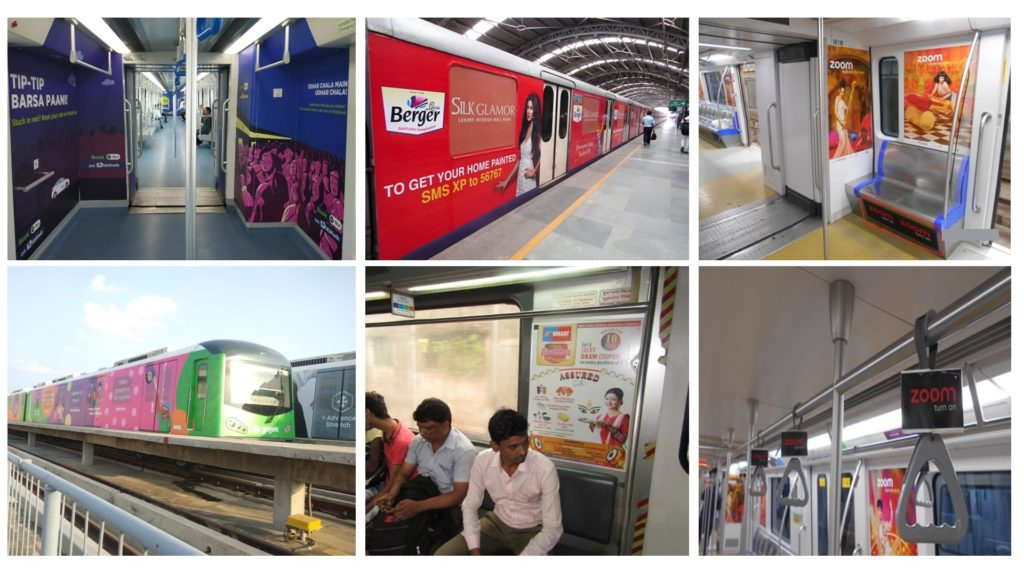
Types and Cost of Transit Media Advertising
Vehicle Advertising:
Ads placed on the exteriors or interiors of buses, trains, or taxis.
Includes full wraps, side panels, or posters inside the vehicle.
Station or Terminal Advertising:
Billboards, digital screens, or posters displayed in stations, terminals, and airports.
Shelter or Bench Advertising:
Ads on bus shelters, seating areas, and kiosks.
In-Transit Digital Displays:
Video or interactive ads shown on digital screens within vehicles.
Transit Card Advertising:
Ads placed on transportation tickets, passes, or cards.
Interactive Advertising:
QR codes, NFC, or augmented reality (AR) features allowing commuters to engage with ads using their smartphones.
Some details
1. Bus Advertising
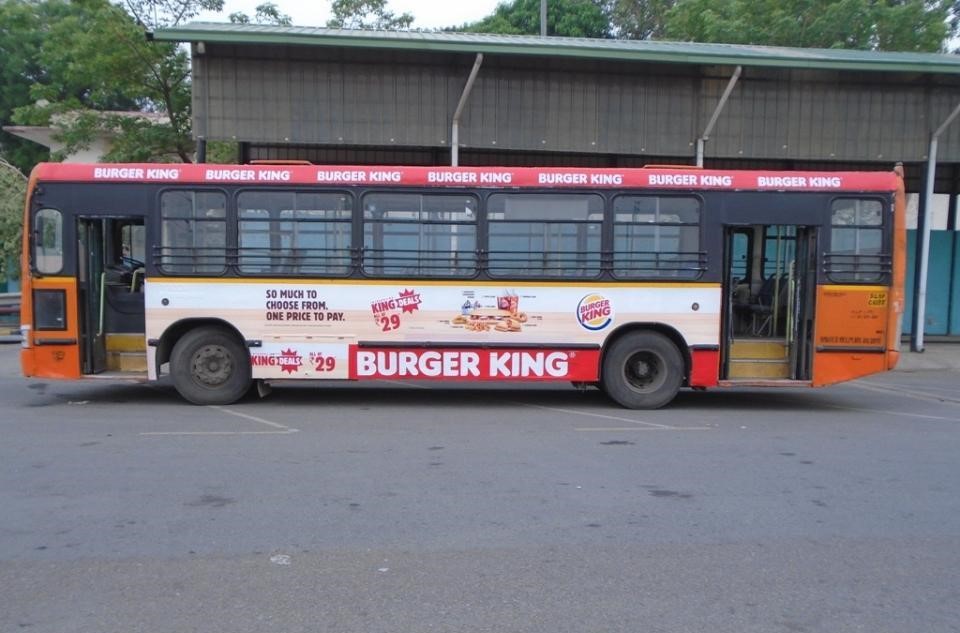
Description: Ads displayed on city buses, including full wraps, side panels, and rear panels. Effective for high-visibility urban areas.
Types:
Full Bus Wrap: Covers the entire exterior of the bus.
Side Panel Ads: Ads on the sides of the bus.
Rear Panel Ads: Ads on the back of the bus.
Inside Branding: Posters or LED screens inside buses.
Materials Used:
Vinyl wraps
Adhesive flex stickers
Cost:
Full Bus Wrap: ₹30,000 – ₹1,00,000/month per bus
Side Panels: ₹10,000 – ₹30,000/month per bus
Rear Panel: ₹5,000 – ₹20,000/month per bus
Inside Posters: ₹3,000 – ₹10,000/month per bus
2. Auto-Rickshaw Advertising
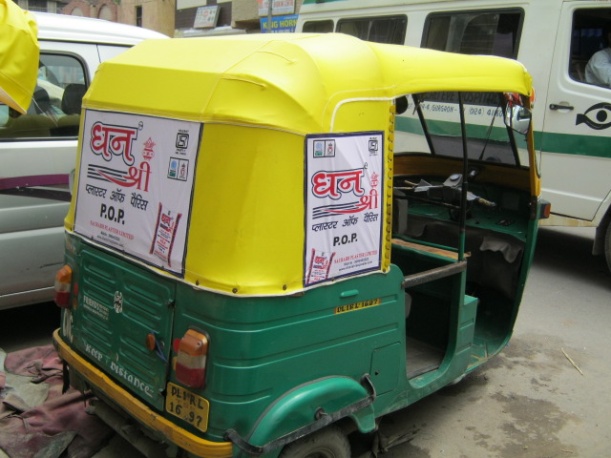
Description: Ads displayed on auto-rickshaws, either on the back or as full wraps. Highly effective for reaching urban and suburban audiences.
Types:
Back Panel Ads: Printed ads displayed on the rear panel of autos.
Full Auto Wrap: Covers the entire exterior of the auto.
Inside Branding: Posters or pamphlets inside autos.
Materials Used:
Vinyl wraps
Flex stickers
Cost:
Back Panel Ads: ₹1,500 – ₹5,000/month per auto
Full Wrap Ads: ₹3,000 – ₹8,000/month per auto
Inside Posters: ₹1,000 – ₹3,000/month
3. Metro Train Advertising
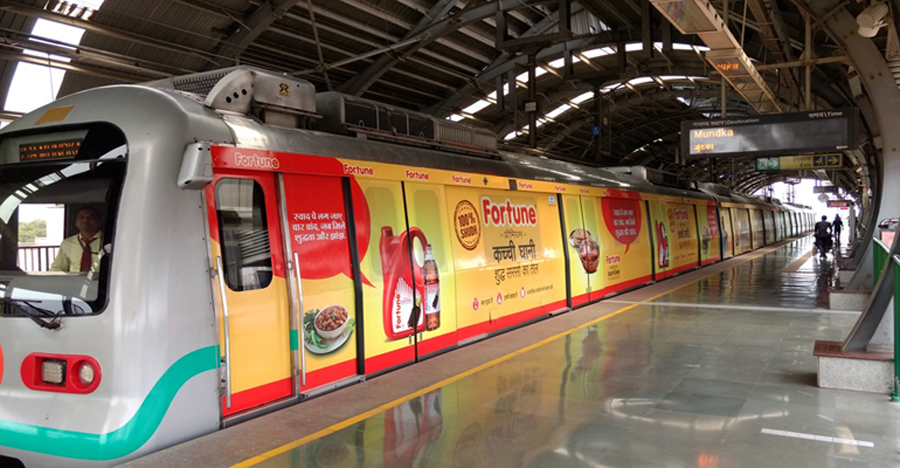
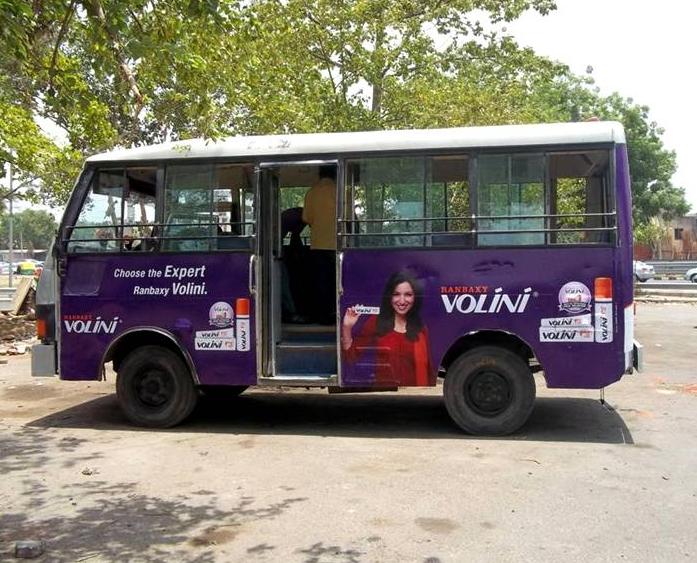
Description: Ads displayed inside and outside metro trains and at metro stations. These target urban commuters in metro cities like Delhi, Mumbai, and Bengaluru.
Types:
Train Wraps: Full exterior branding of metro trains.
Inside Branding: Posters, stickers, and digital screens inside trains.
Station Ads: Backlit boards, vinyl branding, and LED screens at stations.
Platform Screen Doors: Ads on automatic screen doors.
DMRC Feeder Bus: putting ads on the same way as on bus advertising.
Materials Used:
Vinyl wraps
Flex sheets
Digital LED displays
Cost:
Full Train Wrap: ₹3,00,000 – ₹15,00,000/month per train
Inside Train Ads: ₹10,000 – ₹50,000/month per train
Station Ads: ₹20,000 – ₹2,00,000/month per station
Platform Door Branding: ₹50,000 – ₹1,50,000/month
4. Taxi Advertising
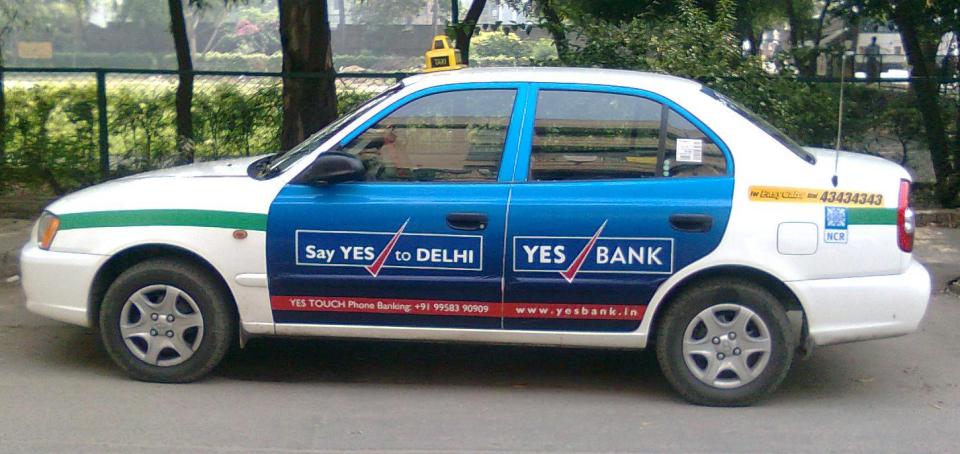
Description: Ads displayed on taxis, either as wraps or rooftop displays. Popular in metro cities where cabs are a common mode of transport.
Types:
Full Wraps: Covers the exterior of the taxi.
Door Branding: Ads displayed on the taxi doors.
Rooftop Displays: LED or printed ads placed on taxi rooftops.
Materials Used:
Vinyl wraps
Adhesive flex stickers
LED displays (for rooftop screens)
Cost:
Full Wrap Ads: ₹10,000 – ₹50,000/month per taxi
Door Branding: ₹5,000 – ₹20,000/month per taxi
Rooftop LED Ads: ₹20,000 – ₹1,00,000/month per taxi
5. Railway Advertising

Description: Ads placed on trains and at railway stations, targeting daily commuters and long-distance travelers.
Types:
Train Wraps: Full branding on train exteriors.
Inside Train Ads: Posters and pamphlets inside train compartments.
Station Ads: Billboards, vinyl branding, and digital screens at platforms.
Overhead Bridge Branding: Ads on footbridges connecting platforms.
Materials Used:
Vinyl wraps
Flex banners
Digital LED screens
Cost:
Train Wrap Ads: ₹2,00,000 – ₹10,00,000/month per train
Inside Compartment Ads: ₹5,000 – ₹20,000/month per train
Station Billboards: ₹20,000 – ₹2,00,000/month
Footbridge Branding: ₹50,000 – ₹2,00,000/month
6. Airport Advertising
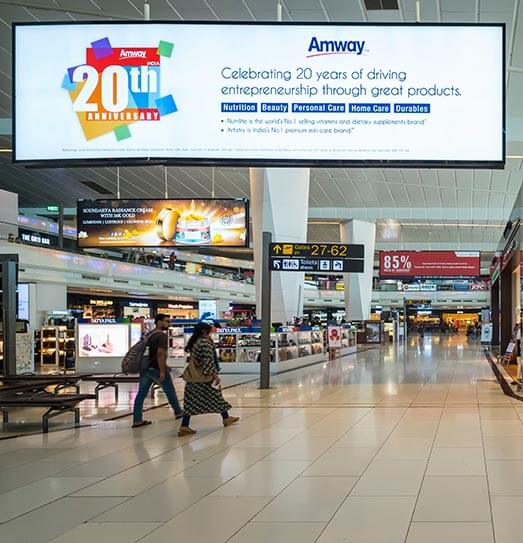
Description: Premium transit advertising targeting high-income travelers through static displays and digital screens at airports as well inside the planes.
Types:
Digital Screens: LED screens showcasing dynamic ads.
Backlit Panels: Illuminated flex boards.
Kiosk Ads: Promotional kiosks in waiting lounges.
Trolley Ads: Ads placed on luggage trolleys.
Plane Wraps: Full exterior branding of the planes.
Inside Plane Branding: Posters, stickers, and digital screens inside planes.
Materials Used:
Digital LED screens
Backlit flex printing
Flex sheets
Vinyl branding
Vinyl wraps
Cost:
Digital Screens: ₹1,00,000 – ₹10,00,000/month
Kiosk Ads: ₹50,000 – ₹5,00,000/month
Trolley Ads: ₹5,000 – ₹20,000/month per trolley
Full Plane Wrap: ₹3,00,000 – ₹15,00,000/month per plane
Inside Plane Ads: ₹10,000 – ₹50,000/month per plane
7. Ferry and Boat Advertising
Description: Ads placed on ferries, boats, and water taxis in coastal areas like Mumbai, Kerala, and Goa.
Materials Used:
Vinyl wraps
Flex banners
Cost:
Boat Wrap Ads: ₹30,000 – ₹1,50,000/month per boat
Inside Posters: ₹10,000 – ₹20,000/month
We are not into Ferry and Boat Advertising
8. Cycle and E-Rickshaw Advertising
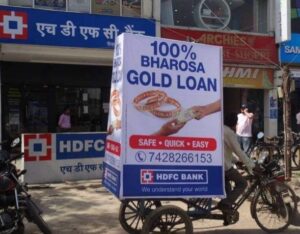

Description: Ads on eco-friendly vehicles like bicycles and e-rickshaws, ideal for local promotions.
Materials Used:
Vinyl flex stickers
Cost:
E-Rickshaw Ads: ₹2,000 – ₹6,000/month per vehicle
Cycle Ads: ₹1,000 – ₹3,000/month per bicycle
9. Mobile Hoardings

Description: Mobile hoardings or moving billboards are an innovative way to capture attention and advertise on the go on moving trucks or vehciles. By incorporating banners or LED displays into mobile hoardings, advertisers and brands can take their campaigns to the next level, offering dynamic, flexible, and highly engaging advertising solutions.Premium transit advertising targeting high-income travelers through static displays and digital screens at airports.
Types:
Digital Screens: LED screens showcasing dynamic ads.
Backlit Panels: Illuminated flex boards.
Banner Ads: Promotional banners.
Materials Used:
Digital LED screens
Backlit flex printing
Vinyl branding
Trucks or vehciles
Cost:
Digital Screens: ₹1,00,000 – ₹5,00,000/month
Backlit Panels: ₹50,000 – ₹1,00,000/month
Banner Ads: ₹20,000 – ₹1,00,000/month
Elements
Captivating Visual Design: Bold colors, high-quality images, and minimal text to grab attention.
Targeted Messaging: Short and impactful slogans tailored to the audience.
Location Relevance: Ads designed to match the interests of commuters in specific regions or routes.
Durability: Use of weather-resistant materials for outdoor ads.
Call-to-Action (CTA): Clear instructions like website links, phone numbers, or social media handles.
Process
Understanding the Audience: Analyze the demographics and behavior of commuters in the target area.
Selecting the Format: Choose the most suitable transit medium based on objectives and budget.
Creative Design: Develop visually appealing content that conveys the message effectively.
Coordination with Transit Authorities: Obtain permissions and coordinate with transportation providers for ad placements.
Execution: Install or launch the ads, ensuring proper positioning for maximum visibility.
Monitoring and Optimization: Track the campaign’s performance and make necessary adjustments.
Costings
The cost varies depending on factors such as location, type of ad, duration, and reach. Here’s a breakdown:
Vehicle Advertising:
Range: ₹1,500 to ₹20,000 per vehicle per month (depending on coverage area and size).
Station/Terminal Ads:
Digital screens: $10,000 to ₹1,00,000 per screen per month.
Static posters: ₹500 to ₹3,000 per month.
Shelter/Bench Ads:
Average: ₹2000 to ₹1,00,000 per month per shelter or bench.
Digital Transit Ads:
Costs depend on screen size and frequency, ranging from ₹5000 to ₹50,000 monthly.
Custom Campaigns:
Interactive or AR-enabled campaigns may cost significantly more, often starting at ₹1,00,000.
Summary of Material Costings (₹/Sq. Ft)
Vinyl Wraps: ₹20 – ₹80
Adhesive Flex Stickers: ₹10 – ₹30
Backlit Flex: ₹40 – ₹100
Digital LED Screens: ₹4,000 – ₹10,000/sq. ft
Key Factors Influencing Cost
Location: Metro cities (like Delhi, Mumbai, and Bengaluru) are costlier than Tier-2 cities.
Ad Type: Full wraps are more expensive than panel or poster ads.
Duration: Longer ad durations often lead to cost savings.
Traffic Density: Vehicles operating in high-traffic areas command higher rates.
Transit advertising is cost-effective when targeting urban populations and offers a high return on investment due to the repetitive exposure it provides to daily commuters.
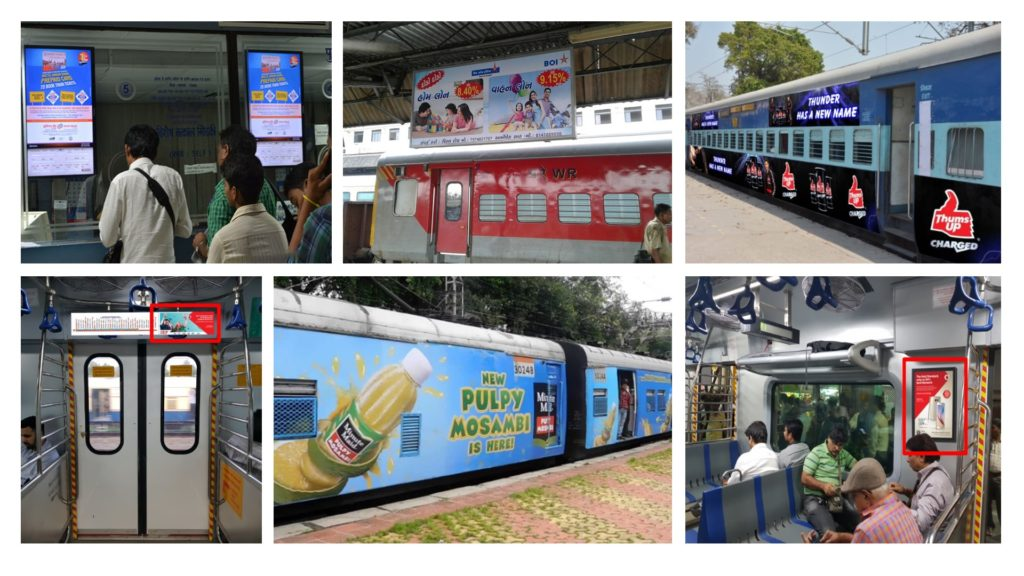
Conclusion
Transit media advertising is a powerful and versatile tool for brands to reach a diverse audience, especially in urban areas with high commuter traffic. With its broad range of formats—from vehicle wraps to digital displays—this medium ensures high visibility and repeated exposure, making it a cost-effective choice for businesses looking to boost their presence. By carefully planning the design, selecting the right formats, and targeting specific transit routes, advertisers can create impactful campaigns that resonate with their audience.
Moreover, its ability to adapt to both static and dynamic advertising needs makes transit media an essential component of any comprehensive marketing strategy. With the right execution and monitoring, businesses can effectively maximize their ROI and establish a lasting impression in the minds of their consumers.